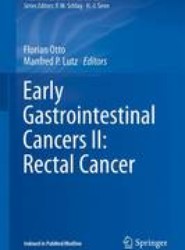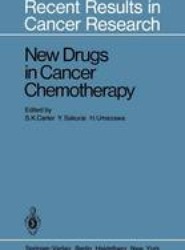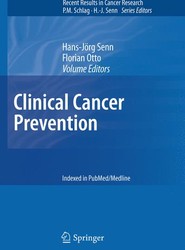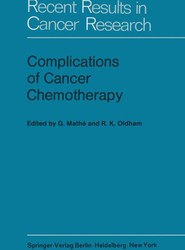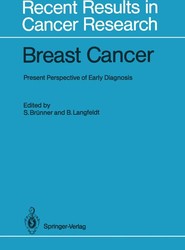(To see other currencies, click on price)
MORE ABOUT THIS BOOK
Main description:
The development of new techniques such as immuno phenotyping, cytogenetic investigations and, more recently, molecular studies has considerably increased our diagnostic repertoire and broadened our ideas about the biology of acute leukemias. While immunophenotyping with mono clonal antibodies has yielded increased diagnostic precision and made it possible to develop a highly reproducible classification of acute leukemias based on cell-biological features, further insights have been gained into the patho genetic mechanisms involved in leukemogenesis by means of cytogenetic detection of acquired structural chromosomal abnormalities. Analysis of the leukemia-associated chromo somal breakpoints using molecular techniques can now pinpoint many genomic sites essential for normal develop ment and maturation of hematopoietic cells but functionally disrupted in leukemic cells. The main goal of the international workshop that we held in Berlin with a select group of scientists and clinicians involved in leukemia research was to describe the state of the art and new developments in the immunologic, cytogenetic, and molecular characterization of acute leukemias and to discuss the clinical importance of cell biological features. After introductory survey lectures dealing with the immunological and molecular-biological characteristics of normal vs. malignant lymphatic and myeloid progenitor cells, the workshop centered on con tributions characterizing the immunophenotype and both numerical and structural chromosomal abnormalities in acute leukemias.
Contents:
I. Hematopoietic Differentiation.- Differentiation of Physiological and Malignant Cells of the B-Cell System.- Expression of B-Cell-Associated Antigens During B-Cell Ontogeny.- Normal and Aberrant T-Cell Receptor Protein Expression in T-Cell Acute Lymphoblastic Leukemia.- Flow Cytometric Analysis of Intracellular Myeloperoxidase and Lactoferrin in Leukemia Diagnosis.- II. Phenotypic Heterogeneity in Acute Leukemias: Immunological Characterization and Clinical Relevance.- Immunological, Ultrastructural and Molecular Features of Unclassifiable Acute Leukaemia.- Incidence and Clinical Relevance of Myeloid Antigen-Positive Acute Lymphoblastic Leukemia.- Myeloid-Associated Antigen Expression in Childhood Acute Lymphoblastic Leukemia.- Contribution of Electron Microscopy to the Classification of Minimally Differentiated Acute Leukemias in Children.- III. Biological and Clinical Significance of Cytogenetic Abnormalities in Acute Leukemias.- Molecular Cytogenetic Applications in Leukemias.- Cytogenetic Abnormalities Associated with Childhood Acute Myeloblastic Leukemia.- DNA Aneuploidy in Childhood Acute Lymphoblastic Leukemia: Relation to Clinical Determinants and Prognosis within Four Consecutive BFM Trials.- Clinical Significance of Cytogenetic Studies in Childhood Acute Lymphoblastic Leukemia: Experience of the BFM Trials.- Chromosomal Abnormalities in Adult Acute Lymphoblastic Leukemia: Results of the German ALL/AUL Study Group.- IV. Minimal Residual Disease in Acute Leukemias: Detection and Immunotherapeutic Strategies.- Molecular Genetic Techniques for Detection of Minimal Residual Disease in Acute Lymphoblastic Leukemia: Possibilities and Limitations.- Immunophenotypic and Immunogenotypic Detection of Minimal Residual Disease in Acute Lymphoblastic Leukemia.- Detection of Aberrant Antigen Expression in Acute Myeloid Leukemia by Multiparameter Flow Cytometry.- Detection of Residual Leukemic Cells in Adult Acute Lymphoblastic Leukemia by Analysis of Gene Rearrangements and Correlation with Early Relapses.- Interleukin-2-Based Immunotherapy in the Management of Minimal Residual Disease in Acute Leukemia Patients.- Preclinical Studies of T-Cell-Mediated Immune Responses Against Autologous Tumor Cells in Patients with Acute Leukemia.- Susceptibility of Human Leukemia Cells to Allogeneic and Autologous Lymphokine-Activated Killer Cells and Its Augmentation by Exposure of Leukemia Target Cells to Cytotoxic Drugs In Vitro and In Vivo.- V. Immunophenotypic and Molecular Genetic Characterization of Acute Lymphoblastic Leukemia: Biological and Clinical Implications.- Regulation of Protooncogenes and Cytokine Genes in Acute Lymphoblastic Leukemia.- Cellular Drug Sensitivity of Immunophenotypic Subgroups of Childhood Acute Lymphoblastic Leukemia.- Use of Clinical and Laboratory Features to Define Prognostic Subgroups in B-Precursor Acute Lymphoblastic Leukemia: Experience of the Pediatric Oncology Group.- Incidence and Prognostic Significance of Immunophenotypic Subgroups in Childhood Acute Lymphoblastic Leukemia: Experience of the BFM Study 86.- Incidence, Clinical and Laboratory Features, and Prognostic Significance of Immunophenotypic Subgroups in Acute Lymphoblastic Leukemia: The GEIL Experience.- Incidence and Prognostic Significance of Immunophenotypic Subgroups in Childhood Acute Lymphoblastic Leukemia: The Experience of the AIEOP Cooperative Study.- Mutations in the Regulatory Domains of bcr/abl-Positive Leukemias Detected by Solid-Phase Automated DNA Sequencing.- VI. Leukemic Cell Characterization in Acute Myeloid Leukemia: Biological and Clinical Implications.- Clonal Analysis of n-ras Gene Activation in Acute Myeloid Leukemia.- Human Stem Cell Factor is a Growth Factor for Myeloid Leukemia Cells.- Morphologic Basis for the MIC Classification in Acute Myeloid Leukemia.- Molecular Genetics of the t(15;17) Translocation in Acute Promyelocytic Leukemia.- Immunophenotype of Hematologic Neoplasms with a Translocation t(8;21).- Diagnostic and Prognostic Importance of Immunophenotyping in Adults with Acute Myeloid Leukemia.- Immunophenotype of Acute Myeloid Leukemia: Correlation with Morphological Characteristics and Therapy Response.- Multiparameter Analysis of Blast Cells in Patients with Acute Leukemia Following a Primary Myelodysplastic Syndrome.
PRODUCT DETAILS
Publisher: Springer (Springer-Verlag Berlin and Heidelberg GmbH & Co. K)
Publication date: February, 2012
Pages: 430
Weight: 645g
Availability: Not available (reason unspecified)
Subcategories: Haematology, Immunology, Oncology
From the same series
Friedhelm Raue
Thomas Ried
Christian Wittekind
Florian Otto
Markus W. Buchler
C. Stroszczynski
Manfred Dietel
H.-J. Senn
Otmar Schober
Jean-Nicolas Vauthey
Elmar Detering
Richard P. Baum
G. Mathe
R. Gross
Florian Otto
Uwe M. Martens
Michail Ignatiadis
Georges Mathe
M. S. Griem
Jack Cuzick
Michael Gnant
Ute Goerling
Hans-Jorg Senn
Werner H. Kirsten
F.A. Langley
Kuan-Teh Jeang
Janusz Jankowski
J. Bernard
Thomas Moehler
Andrea Tannapfel
S.K. Carter
R. S. Nelson
Kerry S. Courneya
Rolf D. Issels
Hans-Jorg Senn
Florian Otto
W. Fischbach
Umberto Veronesi
Otmar Schober
Paul M. Schneider
Hans-Jorg Senn
Wolfgang Tilgen
Jean-Nicolas Vauthey
Richard P. Baum
J. L. Hayward
W. H. Kirsten
Henry T. Lynch
Georges Mathe
G. T. Pack
Leon Goldman
Charles G. Moertel
R.G. Freeman
L. Manuila
Agnes Glaus
Rudiger Liersch
Richard Schindler
Uwe M. Martens
W.A. Fuchs
Michail Ignatiadis
Edward S. Meek
P. Roy-Burman
Merle Mizell
Jean Lindenmann
Pavel Koldovsky
Enrico Anglesio
Georges Mathe
Hans-Jorg Senn
James H. Goldie
Donald Metcalf
Siegfried Seeber
Israel Penn
B. Sokoloff
Manfred Schwab
E. Grundmann
H.-D. Pape
Robert S. Nelson
G. Mathe
J. Lange
G. Bonadonna
J. Szymendera
H. B. Marsden
K. E. Stanley
E. Grundmann
C. Bohuon
Pierre Denoix
A. C. Templeton
Ekkehard Grundmann
Michael Wannenmacher
Ivan Damjanov
Friedhelm Raue
M. L. Jacobs
H.K. Muller-Hermelink
Rita Engenhart-Cabillic
E. Grundmann
Peter M Schlag
E. Grundmann
Ekkehard Grundmann
G. Mathe
Donald Metcalf
S. Brunner
F. F. Holmes
G. Mathe
G. Mathe
Pierre Band
Stephen C. Schimpff
K. Schwemmle
Michael Gnant
K. Hoffken
Friedhelm Raue
H. R. Scheurlen
Aron Goldhirsch
H. Acker
Hans-Jorg Senn
F. G. J. Hayhoe
William Duncan
E. Thiel
Hans-Jorg Senn
K. Musshoff
Hans-Jorg Senn
A. Rossi-Fanelli
Peo C. Koller
Volker Diehl
K. Hoffken
H.-J. Senn
Bruce S. Schoenberg
G. St. Arneault
S.K. Carter
B. Henningsen
J. Hekmatpanah
G. Mathe
E. Grundmann
Hans-Jorg Senn
G. Mathe
Sam Brunner
Hans-Jorg Senn
V. Hofmann
Michael Wannenmacher
G. Wagner
Hans-Jorg Senn
Rudolf Pichlmayr
Frank M. Torti
Michael Wannenmacher
William Duncan
G. Mathe
M. Bamberg
H.-P. Lohrmann
E. Grundmann
Niels Neymark
Peter M Schlag
P. Koldovsky
G. Nass
W. Duncan
Ekkehard Grundmann
Richard P. Gallagher
Hans-Jorg Senn
W. Duncan
W. Duncan
S.K. Carter
Michael Molls
Sam Brunner
Peter Boyle
Maurizio Ponz de Leon
U. Reinhold
Gunter Burg
K. Hoffken
H.-J. Senn
F.W. Schildberg
Beat Thurlimann
Janusz Jankowski
Thomas Moehler
Andrea Tannapfel
Kerry S. Courneya
H.-J. Senn
Per-Ulf Tunn
Andreas von Deimling
Antonella Surbone
Ursula Kapp
Hans-Jorg Senn
Santiago Gonzalez-Moreno
Hanno Riess
Paul M. Schneider
Uwe M. Martens
Rudiger Liersch
Renzo Brun del Re
Andreas von Deimling
Ursula Kapp
Per-Ulf Tunn
Hanno Riess
Antonella Surbone
Manfred Dietel
Santiago Gonzalez-Moreno
Louis Denis
H.-J. Senn
C. Stroszczynski

















